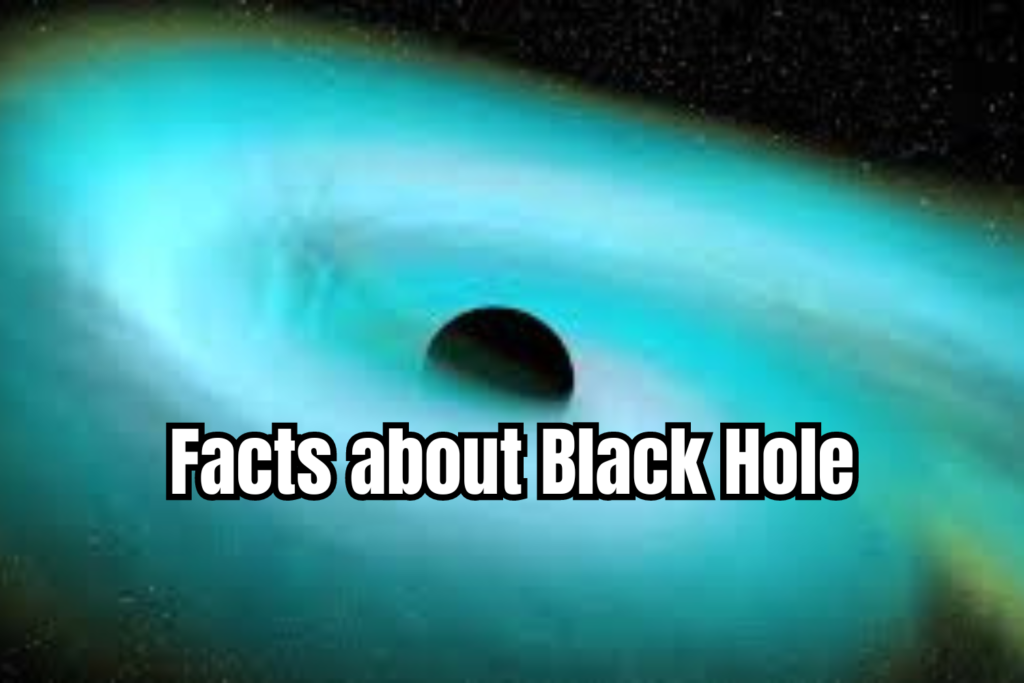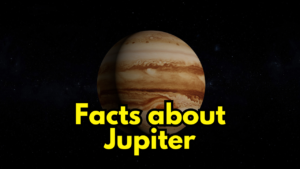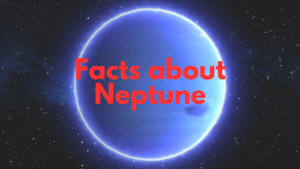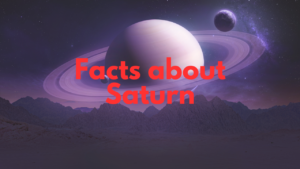
A black hole is a celestial body with an incredibly strong gravitational pull from which light cannot escape. A big star can collapse and become a black hole. At the conclusion of its life, when a star of this type runs out of internal thermonuclear fuels, its core becomes unstable and collapses inward on itself, ejecting the star’s outer layers. The dying star is compressed to a point of zero volume and infinite density known as the singularity by the crushing weight of constituent matter falling in from all directions. Now lets talk about disturbing facts about black holes.
Did you know that some of the most enigmatic objects in space are black holes? Though there’s still a lot we don’t know about them, scientists are learning new things about them every day.
Disturbing Facts about Black Holes No1: How Do Black Holes Form and What Do They Mean?
When a big star disappears and its core collapses in on itself, black holes are created. Nothing can escape from a black hole due to its extreme gravity—not even light! That explains the moniker “black” holes. Anything that approaches a black hole too closely is drawn in and vanishes forever; it’s like seeing a massive vacuum devour everything in its path!
Disturbing Facts about Black Holes No2: Black hole types and their properties
Did you realize that not every black hole has the same composition? Based on their sizes, scientists have distinguished between many kinds of black holes. Here is a summary of some of the several kinds of black holes as identified by NASA:
- The tiniest kind of black holes are thought to be known as primordial black holes. Experts believe they cannot be detected because they have not dissipated, despite the fact that they can range in size from an atom to a mountain.
- The most prevalent kind of black hole is a stellar black hole. These exist in large numbers in our own galaxy and can have up to 20 times the mass of the sun.
- The largest black holes are called supermassive ones. About a billion times the mass of the sun can be found in a supermassive black hole.
- Between the size of a star and a supermassive black hole are intermediate black holes. Although no samples have been found to date, scientists are confident that there must be some out there.
Disturbing Facts about Black Holes No3: Mass and Size of Black Holes
Here are a few more fascinating and entertaining facts about black holes you may share with your friends:
- Did you know that Sagittarius A is the name of the supermassive black hole located in our galaxy, the Milky Way? Its mass is approximately four million times that of the sun! Don’t panic, though; the distance is actually 26,000 light-years, or roughly 152 quadrillion miles, from Earth. That is a lengthy road journey!
- The way time behaves near black holes is different. Time moves more slowly the quicker you travel, according to scientific theory. Things move incredibly quickly around black holes due to their immense gravitational pull, so if you could get close, time would slow down.
- The fact is that no one has ever set foot inside a black hole due to the slim chance of survival. This is known as the “spaghettification effect,” where the gravitational pull of the black hole would lead you to splay out like a piece of spaghetti. Crazy, huh?
- It’s true that black holes don’t exist forever! The substance that they have accumulated over time finally evaporates or disperses.
Disturbing Facts about Black Holes No4: Black Hole Impacts on Space and Time
Not only are black holes enigmatic, but they also warp perceptions! The effect that black holes have on space and time is among their remarkable facts. When a black hole forms, matter from surrounding stars and space is drawn toward the core of the hole by the force of its immense gravity.
The most peculiar aspect is to the behavior of time within a black hole. Though they are unable to quantify time within black holes, scientists believe that time slows down significantly. In fact, some scientists even propose that a person could view both the past and the future simultaneously if they were to fall into a black hole. Not only are scientists fascinated by this incredible concept, but science fiction moviegoers are as well!
Disturbing Facts about Black Holes No5: How to Find and Examine Black Holes
Black holes are extremely difficult to locate since all light is sucked into their singularity, or the center, rendering them undetectable to the unaided eye. Scientists keep an eye on local events in order to better understand these cosmic objects.
For example, a star nearing a black hole emits high-energy light that satellites and space telescopes can pick up on. Researchers examine this light to determine the black hole’s hiding place. So, despite the fact that black holes are invisible to the human eye, scientists have discovered methods for identifying and researching them!
Disturbing Facts about Black Holes No6: Black Holes’ Significance for Understanding the Universe
For a number of reasons, scientists are determined to discover as much as they can about these enigmatic occurrences:
Enhanced comprehension of the functioning of the universe
The key to comprehending the functioning of the universe is found in black holes! In the big scheme of things, black holes are like jigsaw pieces that scientists are trying to figure out how and why things work the way they do. Our understanding of the universe will improve as we get more knowledge about them. It’s similar to attempting to solve an exciting mystery like a detective!
Validate theories
Black hole research aids in the validation and refutation of physics and space theory. This is significant because it allows us to distinguish reality from fiction and opens the door to new discoveries. We can discover more about mass, space, time, and how they all fit together by researching black holes!
Disturbing Facts about Black Holes No7: One cannot see a black hole directly.
Because of its hue and the fact that light cannot escape, a black hole gets its name. However, what is seen are the consequences of a black hole. By examining a black hole’s surroundings, we may observe how it affects its surroundings. For instance, one can witness the destruction of a star that is sufficiently near a black hole.
Disturbing Facts about Black Holes No8. There Is Probably a Black Hole in Our Milky Way.
But there’s no need to panic—Earth is safe! Astronomers think that our Milky Way contains a massive black hole that is located light years from Earth.

Disturbing Facts about Black Holes No9. Stellar black holes are the result of dying stars.
Black holes are created when massive stars disappear because their gravity is so great that it overwhelms the internal pressure that keeps them in shape. A supernova is what happens when the pressure from the nuclear explosions collapses, overwhelming gravity and collapsing the star’s core, sending its other layers shooting into space. The remaining core collapses, leaving behind a black hole—a region devoid of volume and completely covered in density.
Disturbing Facts about Black Holes No10. Black holes fall into three categories.
Primordial Black Holes: These are the tiniest black holes, with masses ranging from that of a mountain to that of an atom.
2) Stellar Black Holes: The most prevalent kind of black holes, these can have a mass up to 20 times that of the Sun. These also come in a diversity throughout the Milky Way.
3) Supermassive Black Holes: With a mass greater than a million times that of the Sun, these are the biggest type of black holes.
Disturbing Facts about Black Holes No11. There’s Funk in Black Holes.
Imagine that an observer sees someone fall into a black hole and records the event. In comparison to the observer, the individual who fell into the black hole experiences a slowdown in time. The explanation for this can be found in Einstein’s Theory of General Relativity, which asserts that when traveling at extremely high speeds near the speed of light, time is altered by your speed.
Disturbing Facts about Black Holes No12. The Use of X-Ray Astronomy Was Required for the Discovery of the First Black Hole.
Ten times as massive as the Sun, Cygnus X-1 was the first black hole to be found in the 1960s.
Disturbing Facts about Black Holes No13. There’s No Way That the Nearest Black Hole Is 1,600 Light-Years Away.
Although V4647 Sagitarii is farther distant than anticipated, its estimated distance is 1,600 light-years. This black hole is currently thought to be 20,000 light years distant by scientists.
Disturbing Facts about Black Holes No14. The existence of wormholes is unknown.
Since we don’t know a lot about physics, we can’t say for sure whether this event exists, but that also means that everything is possible.
Disturbing Facts about Black Holes No15. You Can Only Get Dangerously Close to Black Holes?
It’s safe to watch black holes from a great distance, but not too close. This also implies that it’s unlikely for a black hole to swallow up a whole universe.
Disturbing Facts about Black Holes No16. Science fiction frequently uses black holes.
Science fiction portrays black holes in a variety of ways. Superman: The Animated Series, Transformers, Interstellar, Event Horizon, Star Trek, Battlestar Galactica, Treasure Island, and many more are among the numerous examples.
Black holes were discovered by whom?
Einstein’s equations were supposed to have a perfect mathematical answer in the form of black holes. Space’s configuration surrounding matter is described by Einstein’s equations. The precise distribution of matter is linked to shape and geometry through the lens of general relativity theory.
Karl Schwarzschild discovered the black hole solution in 1915. It was discovered that these regions, or black holes, cause extreme spatial distortion and create a hole in spacetime. Whether these corresponded to actual objects in the universe was not known at the time. As further stellar byproducts, such as neutron stars observed as pulsars, were discovered over time, it became evident that black holes were genuine and should exist. Cygnus-X1 was the first black hole ever discovered.





